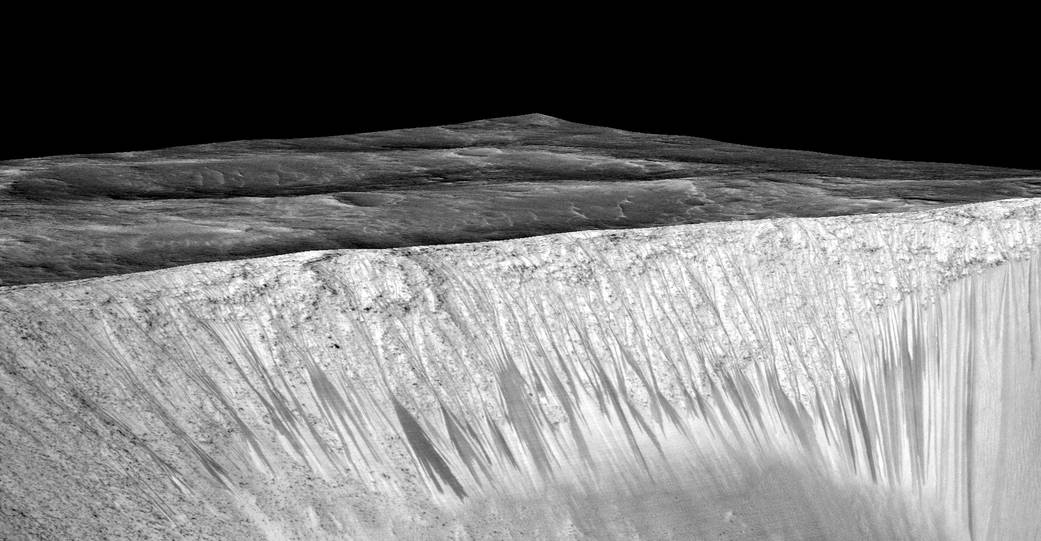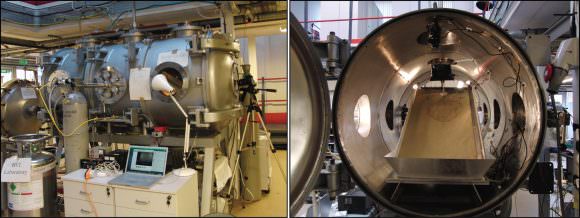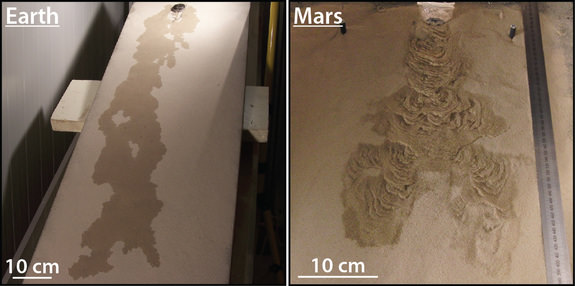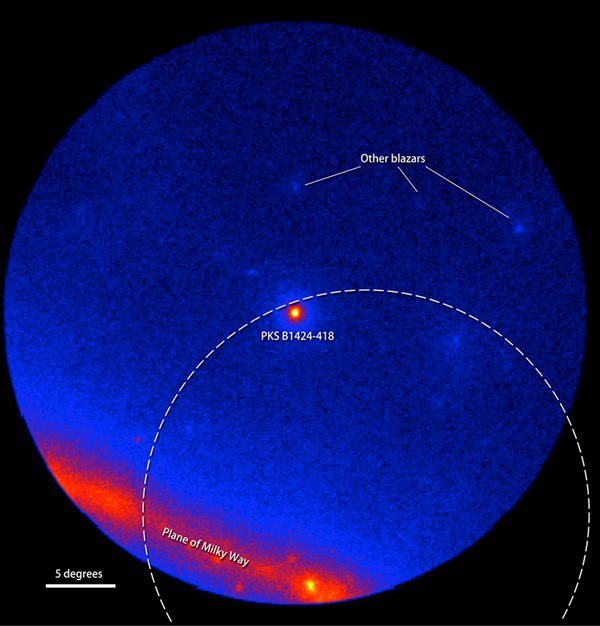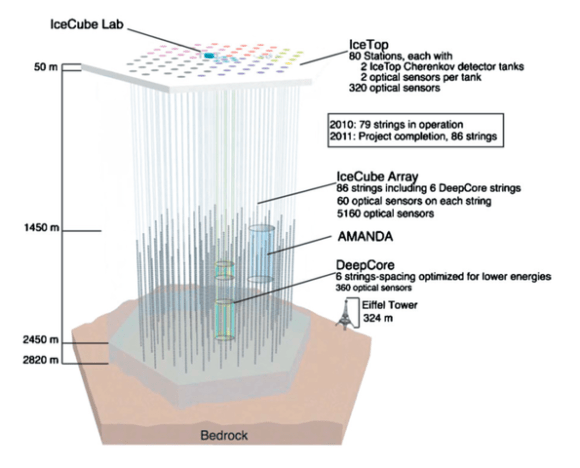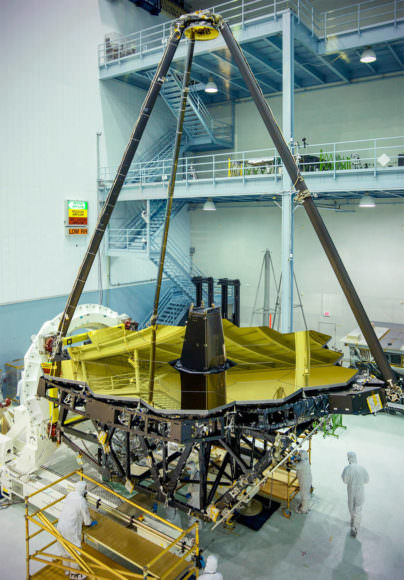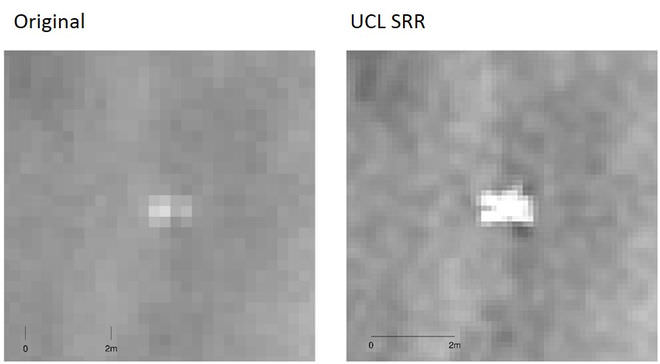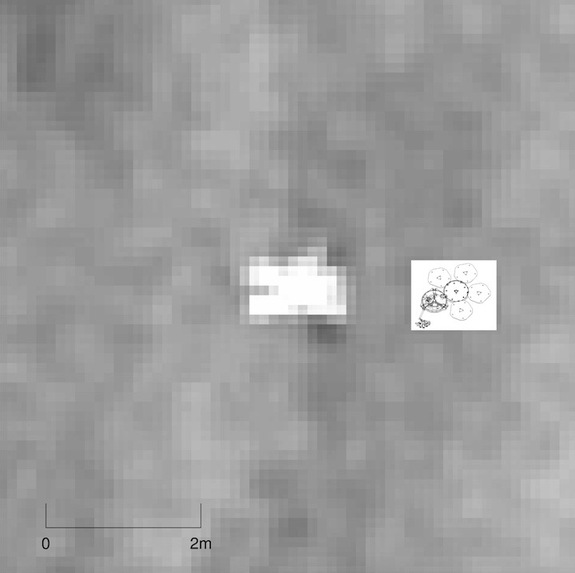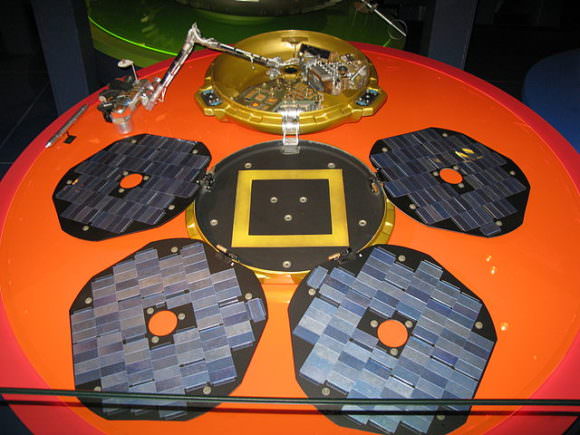Atmospheric features on our Solar System’s gas giants dwarf anything similar on Earth. Earth’s atmosphere spawns hurricanes as larger as 1500 km in diameter. But on Saturn, a feature called the southern polar vortex has an eye that is 8,000 km across, or two thirds the diameter of the entire Earth.
A new high-resolution of Saturn’s southern polar vortex captured by the Cassini probe is ten times more detailed than any previous picture, and reveals details that were previously unseen. The image, which is a composite of two images taken by Cassini in July 2008, was captured when the spacecraft was 392,000 km from Saturn, and 56º below the plane of Saturn’s rings. Despite the distance and position, the image still has a resolution of 2 km per pixel.
Previous images of the vortex revealed clouds of immense proportions ringing the edge of the vortex, but showed the vortex itself to be clear. This is similar to a hurricane on Earth, where the eye itself is clear, but is ringed by wall-clouds of towering heights. This new image shows cloud formations within the vortex itself. The vortex is punctuated with wispy white cloud formations, and a smaller vortex at 10:00 within the larger formation.
The clouds inside the vortex are more than just pretty curiosities, of course. They are deep convective structures welling up from deep within Saturn’s atmosphere, and they form their own distinctive ring. This is all the more interesting because the eye of the vortex itself is generally clear, and is considered by scientists to be an area of downwelling.
The convection on display in Saturn’s southern polar vortex is an important clue to understanding how Saturn transfers energy through its atmosphere. On Earth, hurricanes are caused by warm water, and they move across the surface of the ocean as the warm water does.
Saturn, of course, has no liquid ocean, and the vortex is powered by warm atmospheric gases from deeper in Saturn. As they rise and cool they condense into clouds. The vortex also remains stationary, rather than following a warm mass of water. It’s locked into position over Saturn’s south pole.
Cassini’s narrow angle camera captured this new image, using a combination of two spectral filters. One was sensitive to wavelengths of polarized visible light centered at 617 nanometers, and the other to infrared light centered at 750 nanometers.
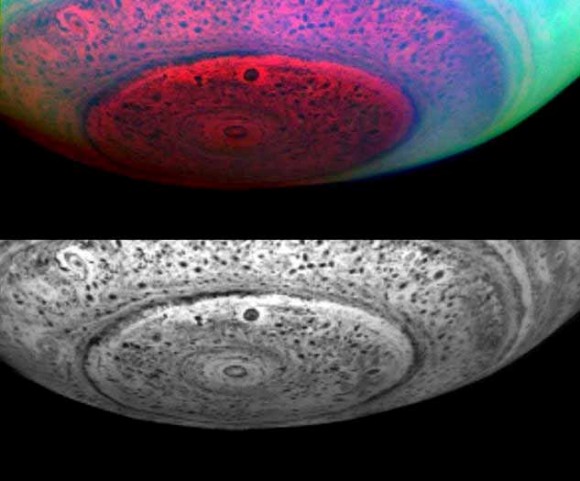
Cassini is a joint mission of NASA, the ESA, and the Italian Space Agency. It was launched in 1997, and has had its mission extended to September 2017. Cassini will end its mission in what the team operating Cassini is calling a Grand Finale. This will be a series of deep dives between Saturn and its rings, and will end with the spacecraft plunging into Saturn’s atmosphere.
To see a gallery of Cassini images, go here.
At Universe Today, we’ve written about Saturn’s polar vortices before. Have a look:
Violent Polar Cyclones on Saturn Imaged in Unprecedented Detail by Cassini

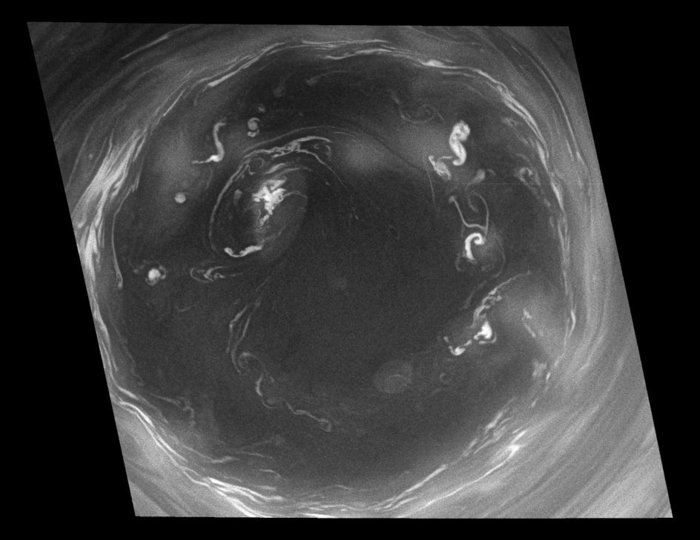

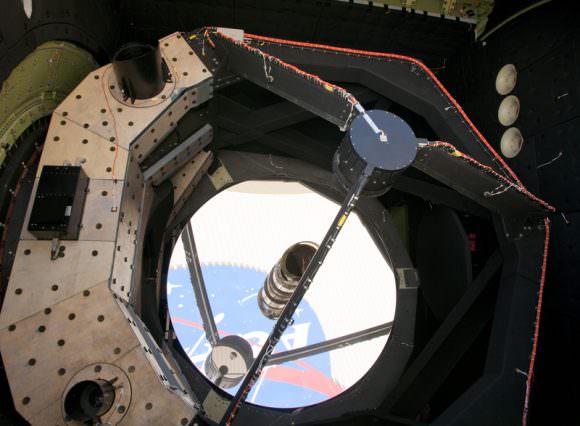




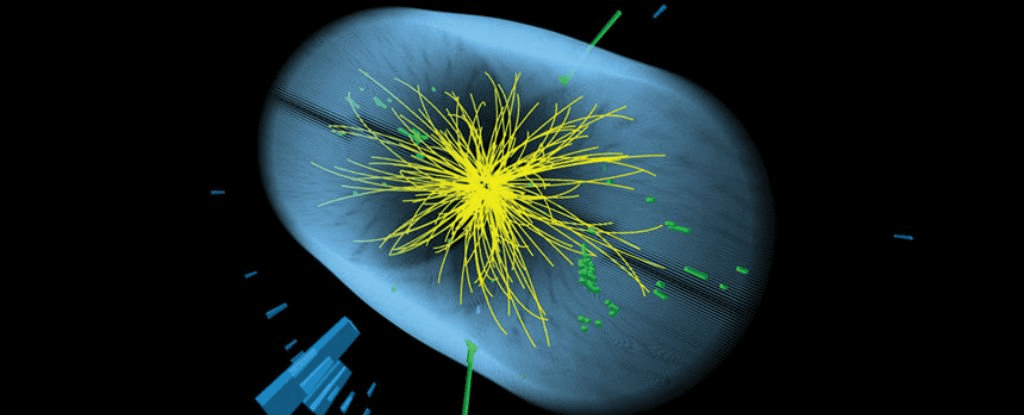
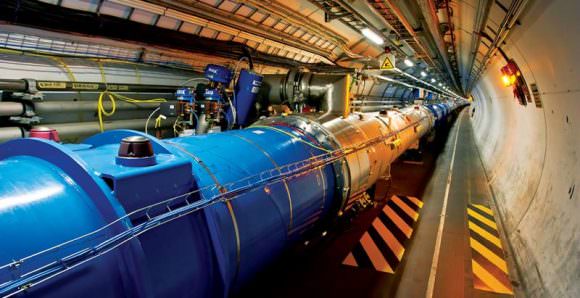
![The Standard Model of Elementary Particles. Image: By MissMJ - Own work by uploader, PBS NOVA [1], Fermilab, Office of Science, United States Department of Energy, Particle Data Group, CC BY 3.0](https://www.universetoday.com/wp-content/uploads/2016/05/Standard_Model_of_Elementary_Particles.svg_-580x436.png)
